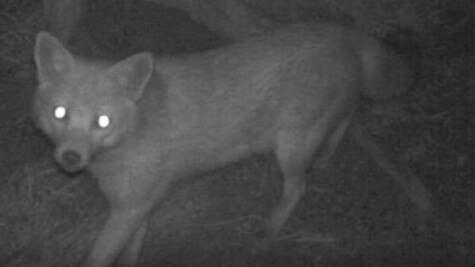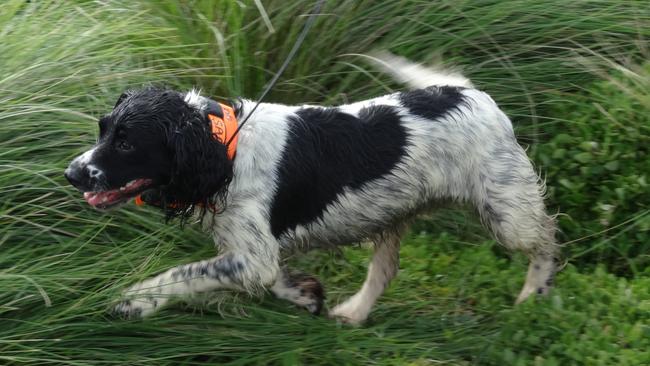Jazz the hound captures rogue fox which killed animals on Phillip Island
An English springer spaniel has been hunting a fox responsible for a killing spree across Phillip Island for 60 days, and today he finally caught him.
Bass Coast News
Don't miss out on the headlines from Bass Coast News. Followed categories will be added to My News.
A hound has finally hunted a fox responsible for a killing spree across Phillip Island.
Jazz, an English springer spaniel, led searchers to the fox on the island’s southern coastline on Wednesday.
The fox was humanely euthanised and was the first seen on the island in six years.
Stuart Murphy from the Nature Parks‘ Conservation Team, in charge of the two-month hunt, said they were prepared to do whatever it took to capture him.
“We were prepared for the long game,” he said.
“In the earlier days of the fox eradication program we hunted a fox for five years, so it kind of puts this one into perspective.”
Mr Murphy said while he “admires” the fox they “don’t belong” in Australia.
“Back before we eradicated foxes they were killing about 300 penguins a year,” he said.
Nature Parks had taken swift action after up to 30 chickens were killed on a property in early May.
Prints and animal droppings were found initially, before infra-red surveillance cameras captured a photo of a fox.
Up to 30 chickens were found slaughtered at Phillip Island Free Range Eggs on May 9 before wildlife conservationists set up cameras and caught the fox on video.
Luckily the fox isn’t thought to have killed any penguins however an image was captured of it with an eastern barred bandicoot in its mouth. Eastern barred bandicoots are listed as endangered and are one of three surviving species of bandicoots
The initial sighting was a “shock”, according to Phillip Island Nature Parks CEO Catherine Basterfield.
“It was a bit of a shock to us, but since the sighting spent quite a bit of time and energy tracking down our rogue fox,” she said.


Acting Phillip Island Nature Parks chief executive Peta Wittig said the fox incursion response was a priority for Nature Parks as foxes were the number one threat to native species, livestock and domestic pets, as well the little penguins.
The work included setting the traps, night-time surveys and detection dog searches across the island.
“We built up a lot of itelligence on this fox. We monitored it and tried to establish patterns,” Mr Murphy said.
Animal droppings and other samples underwent genotyping to determine the sex and obtain a DNA profile of the fox.
Mr Murphy said they are now waiting on the results of the DNA to ensure they are only dealing with one fox.
“We have our fingers and toes crossed it is the same one, but we just need to be sure,” he said.
Ms Wittig congratulated the Nature Park’s Conservation Team who had been working around the clock.
“Our team worked tirelessly with resources in the field daily, tracking the fox’s movements and we will continue to stay diligent with these control efforts,’’ Ms Wittig said.
She added: “We will continue to remain vigilant and conduct extensive surveys until we are certain that the Island is fox free again.
“Foxes are the greatest land-based threat to little penguins on Phillip Island, so we’ve been monitoring the Summerland Peninsula regularly to ensure the safety of the colony.”
Mr Murphy said the Nature Parks would be continuing their surveillance efforts.
“This is not the end of the story,” he said.
“We will continue, like we always have, to monitor for invasive species coming onto Phillip Island.”
Phillip Island was declared fox-free in 2017 after about 25 years of dedicated effort.
It is still not known how the fox arrived on Phillip Island.
The fox-cam was operating on the San Remo bridge and would have detected a fox crossing from the mainland.
Foxes have been known to swim significant distances in search of new territory and food.




